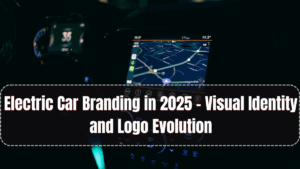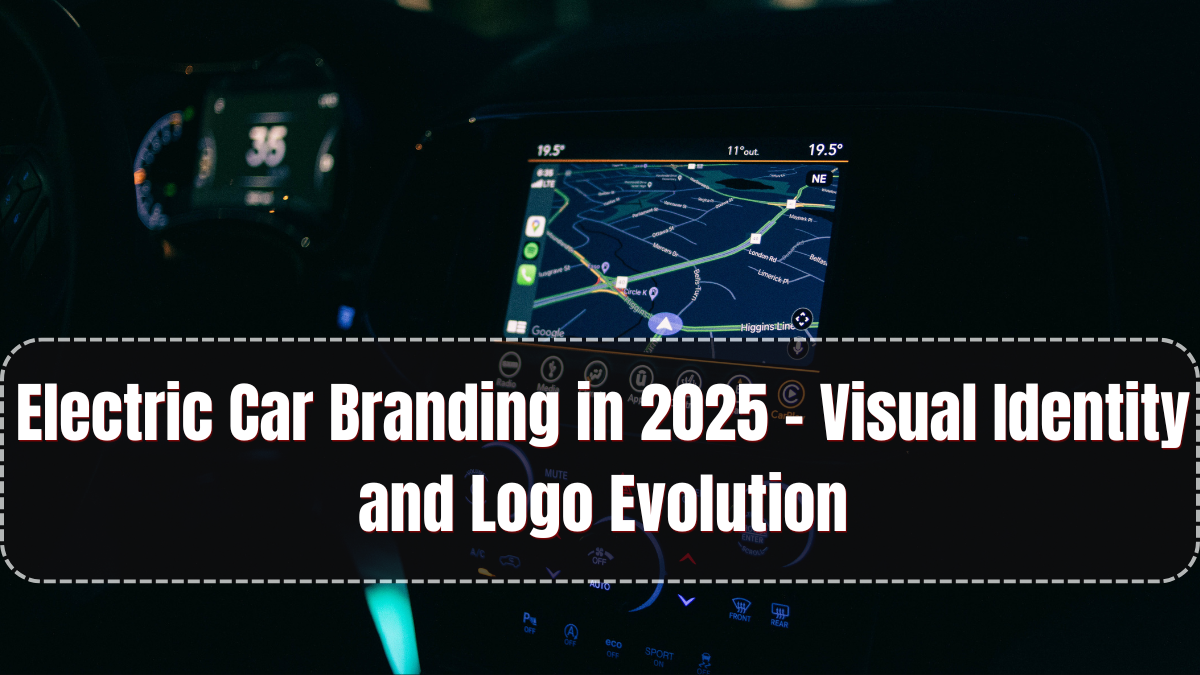The electric vehicle (EV) revolution isn’t just changing how cars run—it’s also transforming how they look, feel, and communicate visually. In 2025, Electric Car Branding has entered a bold new era where automakers are redesigning their logos, interfaces, and overall brand experience to align with values like clean energy, digital future, and minimalism.
As sustainability and tech integration become the heart of mobility, EV brands are moving away from traditional automotive identity toward sleek, digital-friendly design systems.

The Rise of Flat Logos and Minimal Identity
One of the biggest branding trends in 2025 is the shift to flat, geometric, and monochrome logos. Brands are simplifying their identity to align with the minimalist aesthetic of EV design.
Notable examples:
-
Volkswagen, BMW, and Renault have redesigned their logos into 2D outlines, optimized for screens and mobile apps
-
New EV startups like Ola Electric, Simple Energy, and Fisker use abstract symbols to reflect clean tech and innovation
-
Color palettes are shifting toward blues, greens, and greys—symbolizing electricity, purity, and tech neutrality
Flat design ensures that the logo looks clean on dashboards, infotainment screens, mobile apps, and websites—key customer touchpoints in the EV ecosystem.
Sustainable Packaging and Vehicle Badging
EV branding in 2025 goes beyond the logo. Automakers are integrating sustainable design in packaging, naming, and badging.
Key practices:
-
Use of recycled materials in brochures, key holders, and car interiors
-
Laser-etched logos on EVs instead of metallic badges
-
Naming strategies that emphasize eco-friendliness: e.g., Hyundai IONIQ, Tata.ev, BYD Dolphin
Even dealerships are embracing green branding with eco-certified showrooms and plant-based decor to strengthen brand image.
Digital-First Brand Experience
In 2025, electric car branding begins online—before the first test drive ever happens. This makes a strong digital identity crucial.
EV brands are now:
-
Designing interactive websites with AR/VR test drives and 360° car views
-
Launching custom mobile apps for vehicle control, battery tracking, and community engagement
-
Using sound branding—unique startup tones and EV engine sounds—to enhance recall in a silent vehicle era
Brand logos are being re-engineered for responsive design, meaning they dynamically adapt across mobile, watch, tablet, and car screen layouts.
Collaboration with Tech Designers and Creative Studios
Auto companies are collaborating with UX/UI experts, fashion houses, and tech giants to define their brand presence.
Key examples:
-
Sony-Honda Mobility (AFEELA) showcases a tech-forward logo and interactive front grille
-
Tata.ev worked with digital agencies to craft an identity inspired by the Indian youth’s tech aspirations
-
Tesla continues to blend engineering with visual storytelling, positioning itself more as a tech company than a carmaker
This cross-industry design thinking has elevated electric car branding to a lifestyle and tech experience rather than a simple transportation badge.
Emphasis on Storytelling and Brand Purpose
2025 branding focuses heavily on brand purpose and storytelling. Customers now connect with brands that represent:
-
Sustainability goals (net zero, eco materials, energy reuse)
-
Innovation narratives (autonomous driving, AI dashboards, clean tech)
-
Emotional design (simplicity, clarity, trust)
Brands like Rivian, Lucid, and MG ZS EV are building customer loyalty through emotional brand videos, user-generated content, and minimalist storytelling in their campaigns.
FAQs
Why are electric car logos becoming simpler in 2025?
Flat, minimalist logos are better suited for digital environments, dashboard displays, and mobile apps, aligning with EV brand identity.
Are Indian EV brands also rebranding in 2025?
Yes, Indian brands like Tata.ev, Ola Electric, and Mahindra BE have adopted futuristic branding with clean fonts, icons, and app-friendly logos.
Is sustainability part of visual branding now?
Absolutely. EV brands now integrate green packaging, recycled materials, and digital-first communication into their visual identity strategy.
How is sound branding used in electric cars?
Brands are creating signature EV sounds and startup tones to replace the traditional engine roar—building identity through sound design.
Click here to know more.
